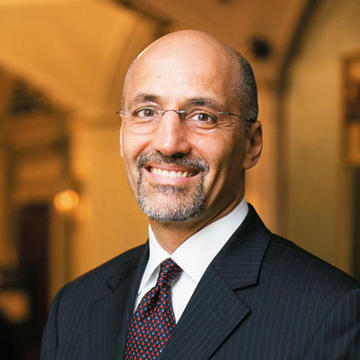From the director: Oral histories investing now in long-term performance
Interviewing key participants in presidential decisions gives us a complete understanding of our country’s most important governing choices.
How did President Trump—and his team—respond to the first reports of the coronavirus? How did the Obama administration respond to the Ebola outbreak? Was each administration’s ability to combat these epidemics affected by broader approaches to health policy, diplomacy, and other critical infrastructures?
Oral history is a massive exercise in delayed gratification
Russell Riley
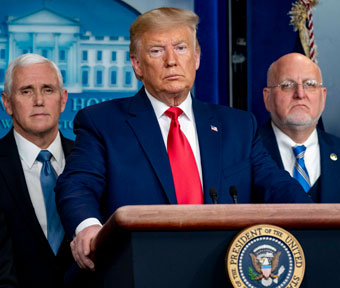
While journalists offer terrific inside accounts to answer questions like these, the intricate details are often not revealed for decades. Moreover, the context in which the main players saw their choices are often as important as the choices themselves.
For nearly a half century, we at the Miller Center have collected candid and confidential recollections from top officials in every White House from Gerald Ford to Donald Trump. Only by painstakingly interviewing the key participants in presidential decisions can we gain a complete understanding of our country’s most important governing choices.
“Oral history is a massive exercise in delayed gratification,” Russell Riley likes to say.
Russell is the co-chair of the Presidential Oral History Program here at the Miller Center. He is one of the nation’s foremost authorities on both elite oral history interviewing and the contemporary presidency.
Miller Center oral historians like Russell conduct these interviews, alongside leading experts in political science, history, law, business, and public policy.
Completing all of those interviews takes years. Each interviewee is able to review his or her transcript and make edits. By the time the whole process is complete and the interviews are publicly released, oftentimes a decade will have passed. Just this past November, we celebrated the release of the George W. Bush Presidential Oral History—almost 12 years since he last sat behind the desk in the Oval Office.
“If you want people to speak candidly to history, you have to afford them the right to review their remarks and to control when their words will be made public,” Russell explains. “This is standard oral history procedure. Without these protections, people will edit what they speak into the recorder, and you simply lose the candor and the spontaneity necessary for the best interview. The wait can sometimes be frustrating, but experience shows that patience in these things is rewarded.”
Indeed, that patience is rewarded many times over. And we’ve seen a flurry of examples of this recently:
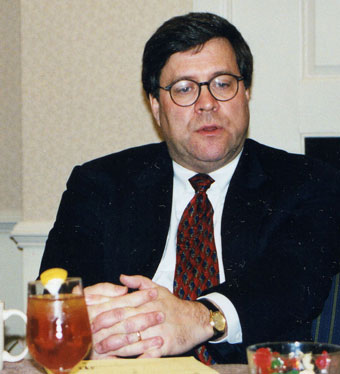
In a New Yorker article recently about Attorney General William Barr, reporter David Rohde quoted from our oral history interview with Barr after he served as attorney general under George H. W. Bush. In his opening paragraph, Rohde wrote, “In the spring of 2001, historians interviewed William Barr about his tenure as Attorney General in the George H. W. Bush administration. The multi-hour discussion was conducted by the University of Virginia’s Miller Center, as part of a project to record oral histories from former Presidents and the senior officials who served them. Midway through the interview, Barr spoke about the tremendous influence and discretion that federal prosecutors wield when deciding whether to charge a person with a crime. ‘One of the things I took away from the Department of Justice is what awesome power prosecutorial power is,’ he said. ‘There’s no other power like it in government. Maybe the power to shoot a foreigner in war, but the prosecutive power destroys lives.’”
The Miller Center and VPM are hard at work on a forthcoming documentary highlighting George H. W. Bush’s advisory dream team: Colin Powell, Condoleezza Rice, Robert Gates, and James Baker. The film was built upon the Miller Center’s George H. W. Bush Presidential Oral History Project, many of the interviews for which were conducted more than two decades ago.
Stu Eizenstat relied on the Miller Center’s Carter Presidential Oral History interviews with not only other officials but also from himself.
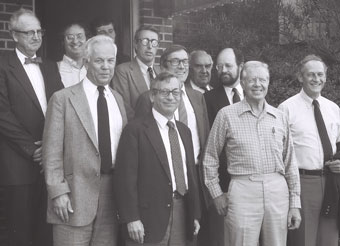
For his book President Carter: The White House Years, former Carter domestic policy advisor Stu Eizenstat relied on the Miller Center’s Carter Presidential Oral History interviews with not only other officials but also from himself. The 25 years that have passed takes a toll on the clarity of memories, blurring the small but meaningful details. “I cite the Miler Center’s own survey of President Carter’s success record with Congress,” he told a packed house when he visited for a book talk in December 2018. “I relied significantly on the interviews that were done here, including my own.”
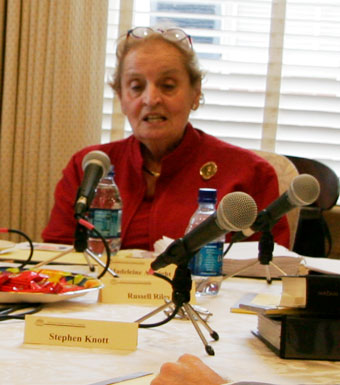
In his forthcoming book, historian Steve Gillon makes the case that Bill Clinton is an underappreciated president. “The more I immersed myself in the Clinton literature, the more convinced I became that he has not received the credit he deserves for achieving what he did under the constraints that he faced,” he told me. “Your oral history project is the indispensable resource for the Clinton administration. And Russell Riley’s book has become my bible.” Gillon wrote a piece in the Washington Post that is a preview of the book.
Delayed gratification has never been so gratifying. And oral history is worth the wait.
